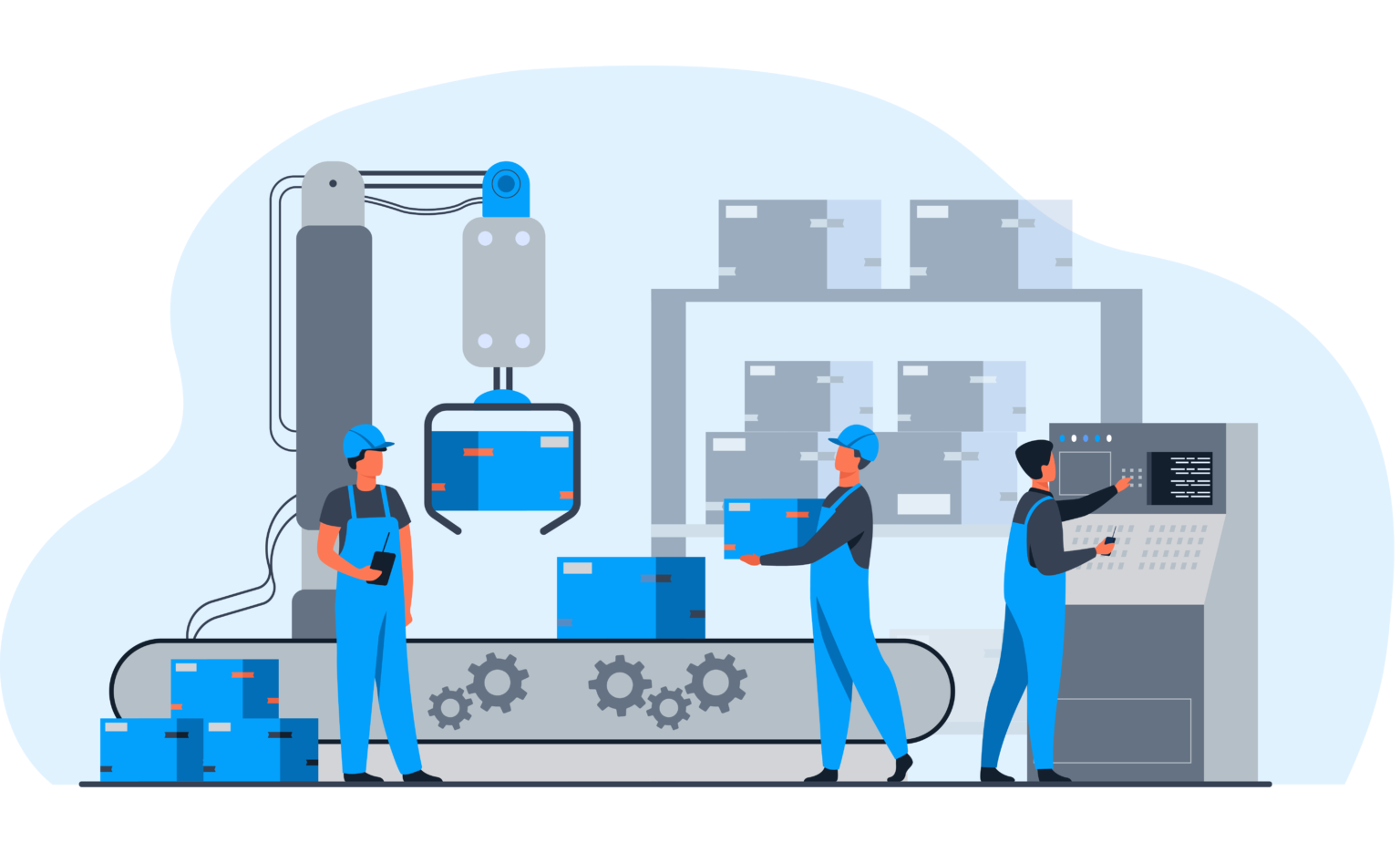RFID Manufacturing

Why RFID in Manufacturing?
In the manufacturing landscape, staying ahead means optimizing every aspect of your production process. RFID technology is the key to achieving unprecedented efficiency, accuracy, and visibility in your operations.
Intelligent Use Cases with RFID
Benefits of RFID for Manufacturers
REAL-TIME INVENTORY MANAGEMENT IN MANUFACTURING PLANT
Tagging
Attach RFID tags to products, materials, or assets. Each tag contains a unique identifier that can be read wirelessly.
Reduce Stockouts
Prevent costly production delays by maintaining optimal inventory levels in manufacturing Plants.
Minimize Overstocks
Avoid excess inventory and associated carrying costs. Streamlined Production Processes
Automated Workflows
Reduce manual data entry and minimize human error with automated tracking in manufacturing.
Efficient Asset Management in Factories
Easily locate tools, equipment, and parts, ensuring they are available when needed.
Enhanced Quality Control
Track components and products through each stage of production for better quality assurance in manufacturing.
IMPROVED SUPPLY CHAIN VISIBILITY IN MANUFACTURING PLANT
End-to-End Tracking
Monitor goods moving through the supply chain, from suppliers to customers.
Timely Deliveries
Ensure timely shipments and reduce lead times with precise tracking.
Better Compliance
Maintain accurate records for regulatory compliance and audits.
Reduced Waste
Minimize waste by accurately tracking materials and reducing overproduction.
Lower Operational Costs
Streamline operations and reduce the costs associated with errors and inefficiencies.
RFID Software for Manufacturing
- Easy Integration: Seamlessly integrates with your existing ERP and MES systems.
- User-Friendly Interface: Intuitive software that simplifies RFID management.
- Comprehensive Analytics: Advanced reporting and analytics to drive continuous improvement.

How RFID Works in Manufacturing
Tagging
Attach RFID tags to products, materials, or assets. Each tag contains a unique identifier that can be read wirelessly.
Reading
RFID readers installed at key points in the manufacturing plants facility capture data from the tags as they pass by.
Data Integration
The captured data with TagMatiks RFID Software and send that data to business applications
Our RFID Solutions for Manufacturing
- Customizable Tags & Readers: Tagmatiks Rugged Tags: Designed to withstand harsh manufacturing environments.
- On Metal Tags: On Metal RFID Tags- It is engineered for optimal performance on metallic surfaces, ensuring accurate and reliable data capture.
- High-Performance Readers: Reliable data capture even in challenging conditions Fixed and Handheld Rugged RFID Readers are compatible.

